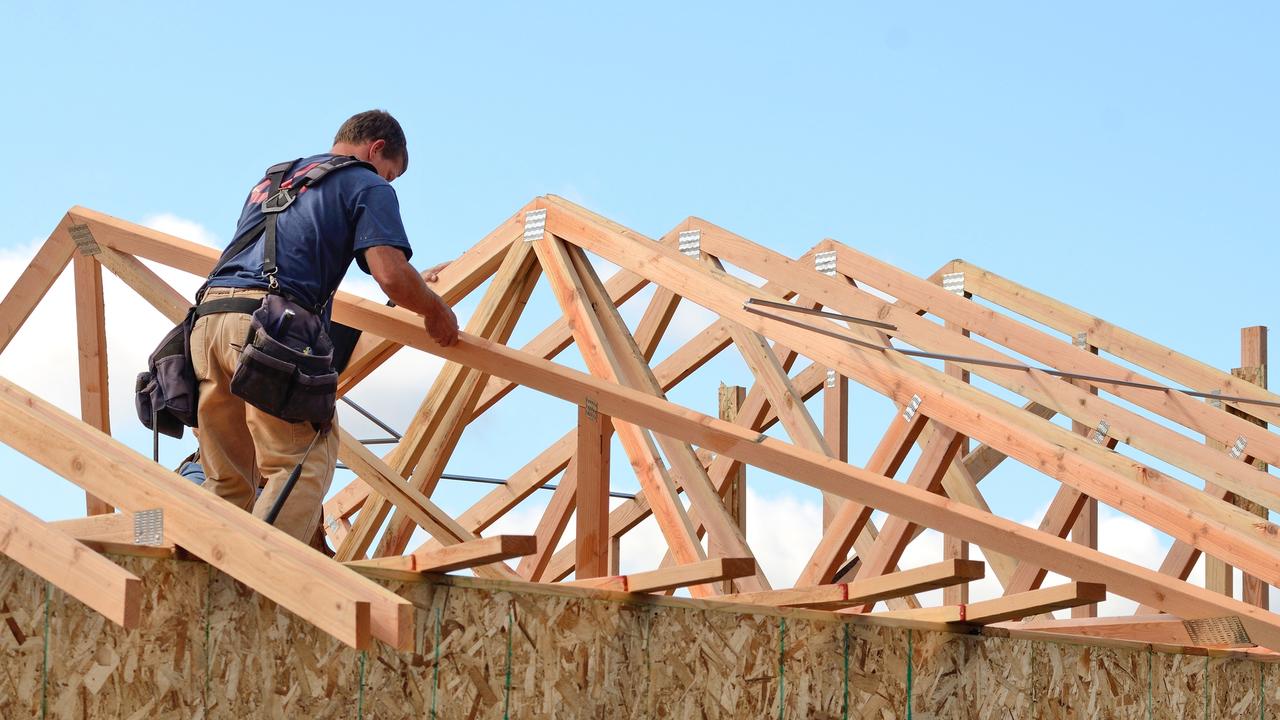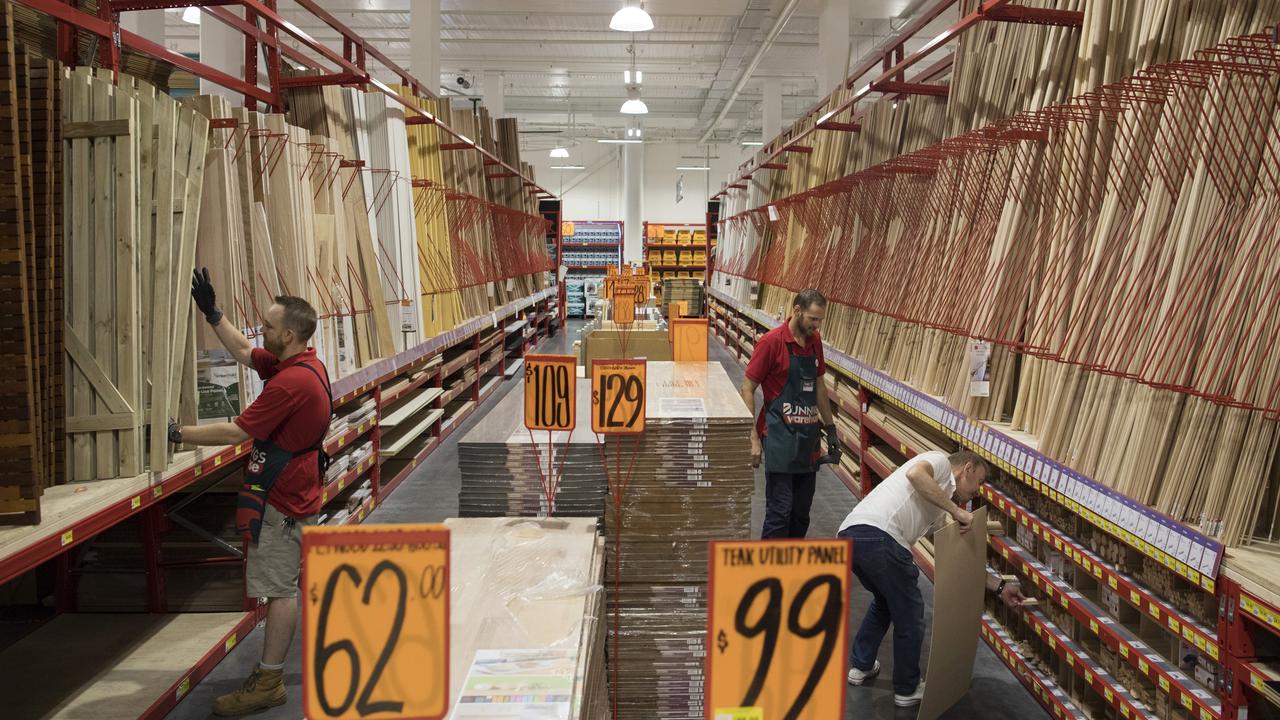Imported timber prices easing back from Covid-19 record highs
Covid-19 saw timber supplies slashed and prices rocket, with timber stolen from work sites as its value soared, but now prices are finally easing and supplies are growing.
Elevated imported timber prices, which more than doubled through Covid-19 to add severe cost pressure on builders and homeowners, have begun to ease with supplies now also more plentiful and alleviating recent shortages of the crucial building material.
Australia’s construction industry sources as much as 20 per cent of its timber from overseas and industry experts believe that while it only makes up a minor proportion of all the lumber used domestically, moderating prices for imported timber should flow through to prices for local timber too.
Mike Barry, the chairman of Natbuild, the nation’s leading independent hardware buying group, said there had been a noticeable easing in timber prices recently as well as a strong build-up in available timber stock which hardware companies were starting to feed into the market.
“Imported timber is coming off from the peak, so we are seeing declines in imported timber prices,” Mr Barry said.
Through Covid-19 a combination of dislocated global supply chains, bushfires in North America and Australia and later the war in Ukraine strangled the availability of timber, with prices in the Northern Hemisphere rocketing as much as 400 per cent.

Timber prices in Australia didn’t rise as much as they did in other markets, such as the US. But they did still rise as much as 200 per cent, with the lack of supply compounding the pain for house builders and house owners.
As the Covid-19 pandemic pushed into 2021, timber prices became scarce or too expensive, or both, squeezing profit margins for builders and delivering bill shock to their customers.
Mr Barry said declining imported timber prices should help reduce the overall cost for all timber as it flows through the economy.
“Important timber has traditionally been a higher cost than domestically sourced timber, and more recently it’s been significantly higher. So yes, ultimately there will be some flow through to lower prices as imported timber prices moderate.
The demand for timber in Australia through Covid-19 was further fuelled by government funding for home building, with a housing boom through 2021 putting more demand pressure on timber and further elevating prices.

The leap in timber prices added tens of thousands of dollars to the cost of a newly built home and there were reports of thieves pinching timber, as well as other building commodities such as copper wire, as the price of lumber in Australia soared.
The timber shortage and price hikes influenced some retailers to make their own investments in the sector to better cope with supply chain bottlenecks. Hardware retailer Bunnings, which has a leading timber arm that sells to tradies and builders, will over the next 18 months seek to double the number of processing plants it owns that manufacture wooden frames and trusses used in home construction.
Rob Scott, chief executive of Wesfarmers, which owns Bunnings, last month noted some prices for commodities such as timber had started to moderate.
“While general inflation remains elevated, prices for some inputs such as cotton, timber and plastic resins have moderated in recent months,” he said.
Bunnings boss Michael Schneider said he was also seeing across his stores higher levels of stock, including timber.
“Our in-stock and availability position, particularly in categories like timber, is also a lot stronger this year,” he said.
However, there could be looming supply chain constraints for the construction industry with a recent report from the Australian Forest Products Association revealing that Australia’s forestry plantation estate has shrunk by the equivalent of 76,000 timber house-frames as farmers and landowners pivot to other commodities which pay higher, short term, returns.
The industry body found that over the last six years the loss to the national estate has been 230,000 hectares from 1.973m hectares in 2014-15 to 1.744m hectares in 2020-21.
“This is devastating news for builders as it means we have lost the equivalent of 76,000 frames – that’s a city the size of Geelong,” said AFPA CEO Ross Hampton. “This serves as a warning to governments that policy incentives for farmers to plant production trees are critical.”
More Coverage
Originally published as Imported timber prices easing back from Covid-19 record highs





